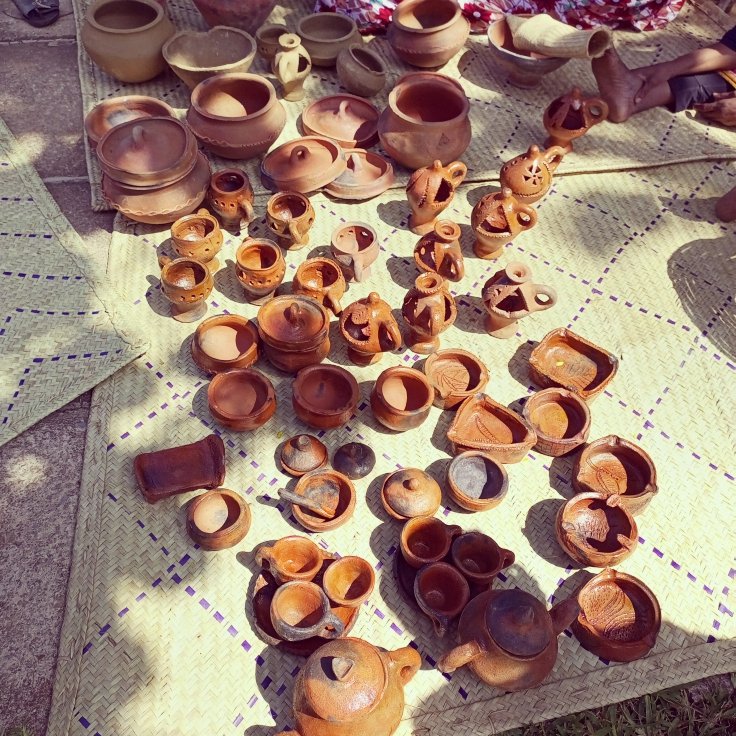I was lucky to witness a pottery master-class by Jomvu Kuu Women Group during International Mother Language Day in February this year at Alliance Francaise, Mombasa. A skill passed on from Jomvu Kuu mothers to their children and their children’s children, from as far back as probably the 14th Century. Short backstory…
Pottery studies are significant in piecing together history, using thermoluminescence. Pottery has the property of storing energy by trapping electrons. When pottery sherds (ceramic pieces found on archeological sites) are heated they emit light rays that are used for dating. Studies of pottery sherds found in Lamu and dated to around 14th Century, were seen to have great similarities to contemporary ones from Jomvu Kuu. In scientific terms, “a 0.16 euclidean distance from the mineral/element percentages from the two sites”. So what does this mean? Lamu has a rich pottery history but it supplemented its clay sources from other areas, e.g Jomvu Kuu (Mombasa). The clay exchange also points to seafaring, as the clay was transported by sea, and the undoubted risk of transporting bulky clay by boat that came along with it.
In the old days, this knowledge was a Jomvu Kuu secret, explaining their recognition as the premier potters in Mombasa. This was done to safeguard their economic interests as a community. Over the last decades, urbanization has made them showcase their expertise to the world. Thime Mwinyi, Chairlady of the Jomvu Kuu Women Group at the heart of the pottery is concerned by how the young generation is not keen on taking up pottery. She feels the knowledge will be lost. She made sure to take time and emphasize the advantages of using pots for cooking. “Sufuria utasafisha na wire mpaka itoboke, chungu utasafisha na ndifu za nazi tu! Kisha chakula hakipoi!” She ended by stating the importance of pottery to their livelihoods, “Ujuzi huu umetulea, umetuvisha, na unatusomeshea watoto wetu, ni baraka kwa Wajomvu.”




